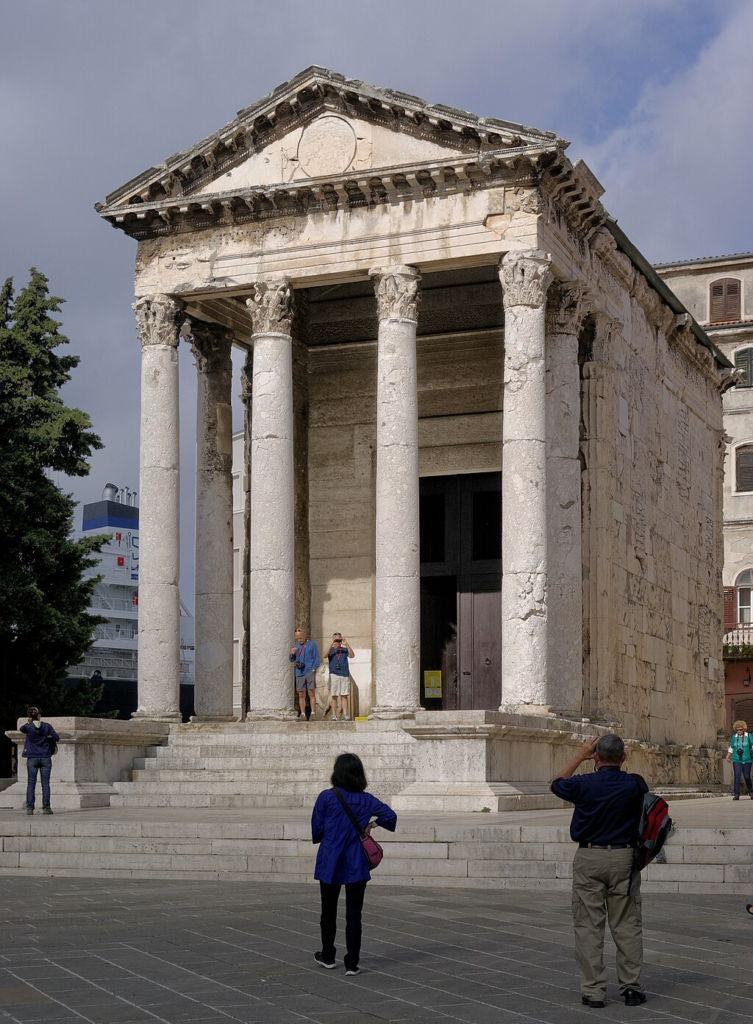Roman temples are a fascinating glimpse into the architectural genius and religious fervor of ancient Rome. These sacred structures not only served as places of worship but also stood as symbols of Roman power and cultural identity. In this comprehensive article, we will delve into the intricacies of Roman temple architecture, their purposes, and the profound impact they had on Roman society and beyond.

The Importance of Roman Temples
Roman temples were central to the spiritual and social lives of the Romans. These structures were dedicated to various gods and goddesses, reflecting the polytheistic nature of Roman religion. Temples were places where citizens could pay homage to deities, seek divine favor, and perform religious rituals.
Architectural Styles of Roman Temples
The Influence of Greek Architecture
Roman temples were heavily influenced by Greek architecture, incorporating elements such as columns, pediments, and friezes. The Romans adapted these features to create their distinct style, which blended functionality with grandeur.
Distinctive Features of Roman Temples
Roman temples typically featured a raised platform called a podium, a deep porch with columns (the pronaos), and a main chamber (the cella) where the deity’s statue was placed. The use of arches and vaults was also a hallmark of Roman engineering prowess.
Materials and Construction Techniques
Romans used a variety of materials, including marble, travertine, and concrete, to build their temples. The introduction of concrete allowed for more complex and durable structures, contributing to the longevity of many Roman temples.
Famous Roman Temples
The Pantheon: A Marvel of Engineering
One of the most famous Roman temples is the Pantheon, renowned for its massive dome and oculus. Originally built as a temple to all gods, it exemplifies the architectural innovation of the Romans.
Temple of Jupiter Optimus Maximus
Located on the Capitoline Hill, this temple was one of the most important in Rome. It was dedicated to Jupiter, the king of the gods, and served as a central place of worship and political gatherings.
Temple of Venus and Roma
This temple, one of the largest in ancient Rome, was dedicated to the goddesses Venus Felix and Roma Aeterna. Its grand scale and intricate design highlight the importance of these deities in Roman culture.
The Role of Roman Temples in Society
Religious Ceremonies and Festivals
Roman temples were the focal points for numerous religious ceremonies and festivals. Events like the Vestalia, dedicated to Vesta, and the Ludi Romani, held in honor of Jupiter, were central to the Roman religious calendar.
Political and Social Functions
Temples also served political purposes, often used as venues for public speeches, senatorial meetings, and other civic activities. This dual role emphasized the interconnection between religion and state in ancient Rome.
Economic Impact
The construction and maintenance of temples stimulated the economy, providing jobs and fostering trade. Temples often housed treasuries and served as financial hubs.
The Decline of Roman Temples
The Rise of Christianity
With the spread of Christianity and the eventual establishment of it as the state religion, many Roman temples were repurposed or abandoned. Christian churches often replaced temples, marking a significant cultural shift.
Preservation and Legacy
Despite their decline, many Roman temples have been preserved and continue to be studied and admired. They offer invaluable insights into ancient Roman engineering, art, and religious practices.
FAQs
What materials were commonly used in Roman temple construction?
Romans commonly used materials such as marble, travertine, and concrete. Concrete, in particular, allowed for more complex and durable structures, contributing to the longevity of many temples.
What is the architectural significance of the Pantheon?
The Pantheon is renowned for its massive dome and oculus, exemplifying Roman architectural innovation. It was originally built as a temple to all gods, showcasing the grandeur and engineering prowess of Roman builders.
How did Roman temples influence later architecture?
Roman temples influenced later architecture by introducing elements such as arches, domes, and the use of concrete. These innovations were adopted and adapted in various architectural styles throughout history.
What role did Roman temples play in society?
Roman temples served religious, political, and social functions. They were focal points for religious ceremonies, venues for political activities, and often acted as financial hubs.
Why did Roman temples decline?
The decline of Roman temples was primarily due to the rise of Christianity, which became the state religion. Many temples were repurposed or abandoned as Christian churches replaced them.
Are there any well-preserved Roman temples today?
Yes, many Roman temples have been preserved, such as the Pantheon and the Temple of Jupiter Optimus Maximus. These structures offer invaluable insights into ancient Roman engineering, art, and religious practices.
Conclusion
Roman temples were not just architectural wonders but also central to the religious, political, and social fabric of ancient Rome. Their design and construction techniques have influenced countless structures throughout history. Despite the decline of their original purposes, the legacy of Roman temples continues to be studied and admired, providing a window into the grandeur and ingenuity of Roman civilization.